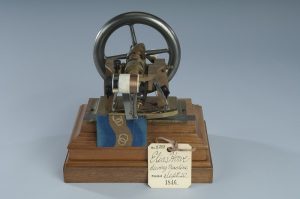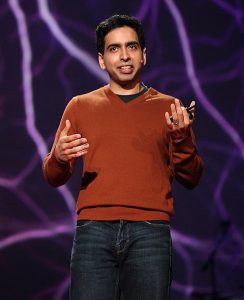As reporters and health officials walked onto the grounds of the mass suicide in Guayana, they were in shock over what they were seeing; hundreds of bodies face down on the ground, dead. One person who was at the site said that the amount of dead bodies was appalling, “it was depicted as not American, not religious, not sane, and ultimately not human.”1 Over 550 bodies of the 900 were unclaimed for almost six months until US Officials decided to cremate them. Once they brought the bodies back to the United States from Guayana, many Americans didn’t think it was right to have these bodies spread out on American soil because of the act they made. US Officials then decided to scatter the ashes of the dead bodies away from the United States border lines.

It all started with Jim Jones. Jones was a religious/political cult leader who had established the People’s Temple as a sect in Indianapolis in the 1950s. His cult focused on themes of communism, and the fight against racism, attracting many African Americans. He moved his cult to San Francisco in 1971, but it would not remain there for long. Soon after the group moved there, Jones was accused of financial fraud, physical abuse of his cult’s members, and mistreatment of children. After Jones was accused, in 1973, he became paranoid that someone would try to destroy his cult, so he moved his entire group to Guayana, South America, to build a socialist utopia known as Jonestown.

Once the cult moved to Guayana, people started to question even more the accusations being made against Jim Jones. Members who had left or escaped the cult were worried for the people still in the cult, so they convinced U.S. Congressmen Leo Ryan of California to fly to Guyana. “In November 1978, Ryan along with a group of journalists and relatives of cult members went to investigate the charges.”2 Jones did not like the idea of people coming to investigate, so he ordered his followers to have Ryan and his investigators assassinated. He ordered the attack on the group as they were returning to the airstrip to leave. A journalist named Charles Krause reported that that morning Ryan was attacked by a man with a knife, although he was not hurt by the incident. “Later that same day, Ryan and his party were attacked by assassins at the Port Kaituma Airstrip. Ryan and four others were killed and ten were injured.”3 While these killings were going on, Jones feared that he would lose his cult members and they would turn against him. He then proceeded to lead his people through a mass suicide, which was something the members had repeatedly practiced since the early 1970s.
These practices were called “White Nights” and consisted of members drinking a liquid that they believed was poisonous as a loyalty test to Jones.4 During these “White Nights,” people were woken up by a loud speaker, and they would assemble for the ritual of passing around a drink of kool-aid, which they were told was poison. Unfortunately, this time was not a test. Hundreds of adults and children lined up to drink this colorful, fruit-flavored punch, which contained cyanide and tranquilizers. Most of them thought they were just proving their loyalty as before, but as more people began to die, they realized that this time it was real. “Over 260 children, for example, had the poison given to them, while only about 40 adults escaped.”5 For those who died willingly though, collective suicide held a religious significance in the context of the worldview that had been established in Jonestown.

Collective suicide was a ritual that signified a purity of commitment to the community. On the night that they all drank this poison, Jim Jones announced “that the members of the community were united as black, proud socialists.”6 Collective suicide also promised release from a world dominated by what Jones perceived as American racism, capitalism, and fascism. He did not want to be captured and taken back to America, so instead he urged his followers to drink the poison, and “step out of the world.”7 Jones had told his followers that they were not committing suicide, but rather they were performing an act of freeing themselves from the harsh world that they lived in. There are later reports that when officials went to Jonestown, Jim Jones was found with gunshot wounds, raising the speculation that either he had committed suicide or someone else had killed him.
The Jonestown Massacre was the largest mass suicide in modern history and resulted in the largest single loss of American civilian life in a non-natural disaster until the September 11 attack in 2001. The mass suicide resulted in over 900 deaths of innocent lives. Once the bodies were found, the Guyanese government asked the United States to take the bodies back. US Officials decided to start sending a few people over to identify bodies so they could decide what to do with them. Over 500 bodies were unclaimed and that is when the United States decided to have the US Air Force come in to take the bodies back to the United States.”8 To this day, families of loved ones are still trying to find a memorial place for the lost lives.
- Encyclopedia of Religion, 2005, s.v. “Jonestown and Peoples Temple,” by David Chidester. ↵
- Dictionary of American History, 2003, s.v. “Jonestown Massacre,” by Carolyn Bronstein. ↵
- Dictionary of American History, 2003, s.v. “Jonestown Massacre,” by Carolyn Bronstein. ↵
- Dictionary of American History, 2003, s.v. “Jonestown Massacre,” by Carolyn Bronstein. ↵
- Encyclopdeia of Religion, 2005, s.v. “Jonestown and Peoples Temple,” by David Chidester. ↵
- Encyclopdeia of Religion, 2005, s.v. “Jonestown and Peoples Temple,” by David Chidester. ↵
- Encyclopdeia of Religion, 2005, s.v. “Jonestown and Peoples Temple,” by David Chidester. ↵
- Encyclopdeia of Religion, 2005, s.v. “Jonestown and Peoples Temple,” by David Chidester. ↵



150 comments
Jaedon E
Wow! That is so crazy and interesting. I never knew about this disaster taking so many lives. Immediately thought about the tragic Waco standoff between federal officials and David Koresh, who also had many people within his cult, that also ended in massive casualties. One thing I can say about my connection is that both leaders had about the same idea of “freedom” and “being freed from this world.”
Jacob Galan
I knew about Jonestown after watching a documentary about and one controversy about this was whether this was a mass suicide or a mass murder since some people were forced to drink it against their will. There were also those who survived by hiding in their cabins and when it was all over and they left their cabins, I can’t imagine what they thought seeing all those dead bodies. It is also scary that a person like Jim Jones can manipulate 1,000 people just for all most of them to die.
Victoria Davis
I have watched a show on the Jonestown Massacre before, so I knew information prior to reading this article. It was such an informational article that described all that Jim Jones did. He was such a manipulative man. I don’t know how this man was able to convince so many people to believe in him. This massacre was so scary it sounds like a horror story.
Nicholas Hatch
Now I have heard of the Jonestown massacre before, but this article was still very informing. It’s still very eerie to hear about the leading event that leads up to the mass suicide of the cult. It’s very crazy to hear that someone such as Jones could lead over nine hundred to mass suicide by tricking them into drinking a poisoned kool-aid to prove their loyalty. This is very sickening. Overall the article was very well written and very interesting. Great Article!
Malik Heard
I have heard of the Jonestown massacre but i didn’t know there were people that were able to survive and escape the place. This sounds like some horror story of fiction but to think this actually happened is crazy.This man was able to have people drink a poisoned Kool aid of there own will to prove there loyalty.This article was well written easy to understand and a bit interesting and scary to think that this man could convince his people to do this.
Sarah
My father is one of the U.S. soldiers who helped clean up the bodies and he found one of the survivors. I feel that his story and the stories of the others who found survivors and bagged bodies aren’t told enough. I have only seen one article telling of the horrors that he and the other men with him had to go through. To this day he still cries when he talks about it and he now has PTSD.
Eric Ortega Rodriguez
Prior to reading this article, I had no knowledge of this massacre. The Guyana people really hold their beliefs close to them since they were willing to sacrifice themselves. I also find it sad how malicious Jim Jones was. He used his power for evil which is something that is truly sad. Overall, this is a very fascinating article and was very well written. I also think that inserting the featured image was a good touch since it helps the audience understand the seriousness of this topic. Good work.
Victoria Rodriguez
I have heard of the Jonestown Massacre before. Each time is just as chilling as my first time hearing about it. It is inconceivable to me on the events leading up to the mass suicide. It is even more difficult to think about the head space some of the victims were in to be able to watch others die around them and still drink the kool aid. Great work on this article!
Lilliana Canales
I’ve heard of the Jonestown massacre, but never really the story until watching the cult season of American Horror Story. This article tells more about the twisted person Jim Jones was. The fact that he believed he could create a utopia without any elected officials knowing or having citizens vote on it is wrong in every sense and he knew he was wrong which is why he moved his cult elsewhere. It’s upsetting that the ashes of those who lost their lives were not wanted by Americans, but that’s the ultimate price that these cult members had to pay.
Valeria Perez
I had never heard of this horrible incident before reading this article. It is crazy to think how this man could convince 900 people to move their entire lives to South America and to prove their loyalty by drinking “fake” poison, until it wasn’t. Were friends and family ashamed of what their loved ones had done and that is why they did not claim their bodies?